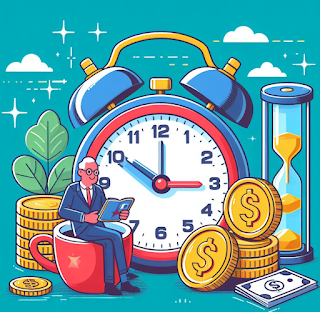The Economics Behind Instant and Delayed Gratification Explained in One Minute: Consuming vs. Saving
Have you ever faced a dilemma between buying something you want now or saving money for later? If so, you are not alone. Many people struggle with balancing their present and future needs, especially when it comes to money. This is because we are influenced by two psychological forces: instant gratification and delayed gratification.
Instant gratification is the desire to experience pleasure or fulfillment without delay or deferment. It is the tendency to choose immediate rewards over long-term benefits, even if the latter are more valuable. For example, you might buy a new gadget or a fancy meal instead of saving money for a vacation or retirement.
Delayed gratification is the ability to resist the temptation of an immediate reward and wait for a later reward. It is the willingness to sacrifice short-term pleasure for long-term goals, even if the former are more appealing. For example, you might save money for a down payment on a house or an emergency fund instead of spending it on impulse purchases or entertainment.
Both instant and delayed gratification have economic implications. On the one hand, instant gratification can boost consumption and stimulate economic growth, especially in times of recession or crisis. On the other hand, instant gratification can also lead to overspending, debt, and financial insecurity, especially in times of inflation or uncertainty.
On the contrary, delayed gratification can promote saving and investing, which can increase capital accumulation and productivity, especially in times of expansion or stability. However, delayed gratification can also result in underconsumption and deflation, especially in times of depression or stagnation.
This trade-off between instant and delayed gratification is known as the Paradox of Thrift1, which states that what is good for the individual (saving) may be bad for the society (low demand), and vice versa. Therefore, finding the optimal balance between consuming and saving is not only a personal challenge, but also a social dilemma.
How can we overcome this paradox and achieve a healthy and sustainable financial behavior? There is no easy answer, but some possible strategies are:
- Setting SMART (Specific, Measurable, Achievable, Relevant, and Time-bound) goals that align with your values and priorities.
- Creating a realistic budget that allocates a portion of your income to spending, saving, and investing, and sticking to it.
- Automating your savings and investments, so that you don’t have to rely on your willpower or motivation.
- Rewarding yourself for reaching your milestones, but not at the expense of your long-term objectives.
- Seeking professional advice or support from a financial planner, a coach, or a mentor, if needed.
Remember, the choice between instant and delayed gratification is not a binary one. You can enjoy the present and plan for the future, as long as you do it wisely and responsibly. After all, money is a tool, not a goal, and it should serve your happiness, not hinder it.


Comments
Post a Comment